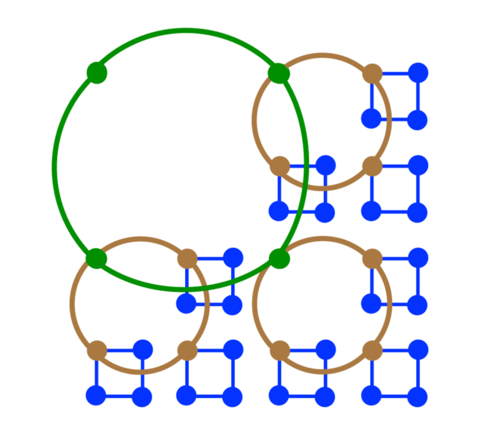Network Function
Network management
Like a classical network, a quantum network needs to be managed and controlled to properly function. NIST is developing an integrated testbed for quantum components: the Platform for Quantum Network Innovation. The platform is an extension of a classical testbed network on the NIST Gaithersburg campus. One of the goals is to develop a control plane that would manage the network operations, such as establishing, terminating, and characterizing node-to-node connections and sharing quantum resources. Here we are interested in demonstrating that the tools developed in the process provide necessary network functions, such as qubit routing, and are optimal. The other goal is to test and benchmark the network hardware developed by other research groups. Specifically, we are interested in:
- Control, management, and measurement planes research and testing
- Coordination between classical and quantum information transfer
- Numerical Simulation of network functions
- Quantum Network Stack – layering and protocol development
- Compatibility and performance evaluation of network components

PI contact: Abdella Battou
Theory of quantum network connectivity
Network connectivity affects how quickly one can create entangled states across the network and how much time it takes to run any given application on this network. We theoretically study the effects of network connectivity on network performance. For example, we recently demonstrated that hierarchical modular networks – in which nodes are grouped into modules, which are in turn grouped into supermodules, etc. – can be optimal for certain applications.
PI contact: Alexey Gorshkov
Notable Publications:
A. Bapat, Z. Eldredge, J. Garrison, A. Deshpande, F. Chong, and A. Gorshkov, Unitary Entanglement Construction in Hierarchical Networks, Physical Review A, 98, 062328 (2018) https://doi.org/10.1103/PhysRevA.98.062328
Z. Eldredge, L. Zhou, A. Bapat, J. Garrison, A. Deshpande, F. Chong, and A. Gorshkov, Entanglement Bounds on the Performance of Quantum Computing Architectures, Physical Review Research, 2, 033316 (2020) https://doi.org/10.1103/PhysRevResearch.2.033316
Technology Readiness Level: 1
Contacts
-
(301) 975-5887
-
(301) 975-4281
-
(240) 688-8979

